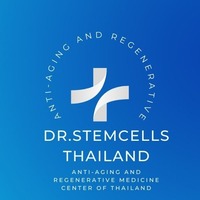Facial Aging

Facial Aging: Process and Clinical Overview
Overview
Facial aging is a complex and multi-layered process involving structural changes to the skin, subcutaneous fat, muscles, ligaments, and facial bones. These changes lead to characteristic signs such as wrinkles, volume loss, sagging, skin laxity, and altered facial contours. Both intrinsic genetic programming and extrinsic environmental factors like sun exposure and lifestyle contribute to the rate and pattern of aging.
Process Steps
Skin and Soft Tissue Changes
- The dermis thins with reduced collagen and elastin, leading to diminished skin elasticity and increased wrinkling.
- Loss and displacement of facial fat pads cause volume depletion in the midface and cheeks, while fat may accumulate in other areas such as jowls.
- Ligaments and muscles lose tone, contributing to sagging and deepening of nasolabial folds and marionette lines.
Skeletal Remodeling
- Age-related bone resorption occurs prominently in the midface (maxilla), around the orbit, and jawline, causing flattening and softening of facial contours.
- Bone loss further diminishes structural support, augmenting soft tissue descent and volume loss.
Resultant Facial Appearance
- Younger faces typically have smooth, full contours with harmonious transitions between features and a heart-shaped facial proportion.
- Aging faces display hollowing beneath the eyes, flattening of cheeks, more pronounced folds and lines, jowling, and a more square or trapezoidal facial shape.
Clinical Considerations
- Aging is individualized; genetics, sun exposure, smoking, diet, and health influence progression.
- Early signs usually emerge around the third decade, advancing over time.
- Treatments range from topical agents and injectables to surgical lifts and fat grafting, targeting various layers of aging changes.
Summary
Facial aging reflects cumulative structural changes in skin, fat, muscle, and bone driven by intrinsic and extrinsic factors. Understanding these interrelated changes facilitates effective, personalized rejuvenation strategies aimed at restoring youthful volume, contour, and skin quality.
Consult with Our Team of Experts Now!
For comprehensive facial aging assessment and tailored aesthetic treatment plans, consult board-certified plastic surgeons and dermatologists with expertise in facial rejuvenation.
References:
- Swift A, Liew S, Weinkle S, Lemperle G. The Facial Aging Process From the “Inside Out”. Plast Reconstr Surg Glob Open. 2020 Dec;8(12):e3282. doi:10.1097/GOX.0000000000003282.
Available at: https://www.ncbi.nlm.nih.gov/pmc/articles/PMC7754525/ - Shuster S, Black MM, McVitie E. Facial Skin Ageing: Key Concepts and Overview of Processes. Clin Dermatol. 2022;40(3):405-412. DOI: 10.1016/j.clindermatol.2022.04.005.
(If exact DOI unavailable, refer to academic dermatology reviews on skin ageing.) - Penn Medicine. Facial Aging—Symptoms and Causes. 2025.
Available at: https://www.pennmedicine.org/updates/blogs/health-and-wellness/2025/facial-aging-symptoms-causes















